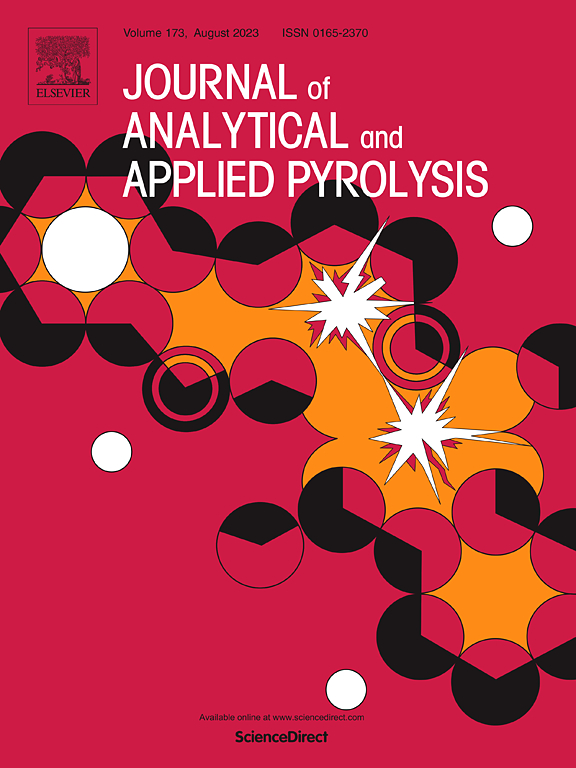通过封闭系统热解过程将聚烯烃混合物转化为燃料
IF 5.8
2区 化学
Q1 CHEMISTRY, ANALYTICAL
引用次数: 0
摘要
本文研究了无氧封闭体系中实验条件对40 %中密度聚乙烯(MDPE)、35 %低密度聚乙烯(LDPE)和25 %聚丙烯(PP)组成的聚烯烃混合物(PO)热解过程的影响。目标是获得最好的产量和质量的汽油和柴油类型的燃料。通过改变温度(400、425和450°C)和反应时间(1、5、15、30和45 分钟)来研究自生压力的影响。在425°C和60 分钟的条件下,研究了初始压力(10、20、30、40和50 bar)的影响。得到的产物是气、油和蜡。没有观察到焦炭的存在。燃料生产的首选产品是石油。在无氧密闭系统中,热解过程的温度从通常的550℃降至400-450℃。对两种工艺的气液化学组成和模拟蒸馏行为进行了研究。在自生压力过程中,提高类燃料产品产量和质量的最佳变量为425°C, 30-45 min和高达33 bar。初始压力的影响表明,较高的压力在PO裂化过程中没有表现出优势。虽然自生压力是气体形成增加的结果,因此对所获得的产品有重要影响,但似乎不需要更高的初始压力(高于10 bar)来增加产品的产量或质量。本文章由计算机程序翻译,如有差异,请以英文原文为准。
Converting polyolefin mixtures into fuels via a closed-system pyrolysis process
This work examined the effects of the experimental conditions in an oxygen-free closed system on the pyrolysis process of a polyolefin mixture (PO) composed of 40 % medium-density polyethylene (MDPE), 35 % low-density polyethylene (LDPE), and 25 % polypropylene (PP). The goal was to get the best yields and quality of gasoline and diesel-type fuels. The effect of the autogenic pressure was studied by varying the temperature (400, 425, and 450 °C) and reaction time (1, 5, 15, 30, and 45 minutes). The effect of the initial pressure (10, 20, 30, 40, and 50 bar) was studied at 425 °C and 60 minutes. The products obtained were gas, oil, and wax. The presence of coke was not observed. The preferred product for fuel production was oil. The temperature of the pyrolysis process decreased to 400–450 °C in an oxygen-free closed system from a usual 550 °C when the procedure was conducted in an open system. Gas and liquid chemical composition and simulated distillation behaviors were also studied in both processes. In the autogenic pressure process, the optimal variables for higher yield and quality of the fuel-like products were 425 °C, 30–45 min, and up to 33 bar. The effect of the initial pressure showed that higher pressures did not present an advantage in the PO cracking process. While the autogenic pressure was the result of an increasing gas formation and therefore presented an important effect on the products obtained, higher initial pressures (above 10 bar) seemed not to be required for the increment in the yield or quality of the products.
求助全文
通过发布文献求助,成功后即可免费获取论文全文。
去求助
来源期刊
CiteScore
9.10
自引率
11.70%
发文量
340
审稿时长
44 days
期刊介绍:
The Journal of Analytical and Applied Pyrolysis (JAAP) is devoted to the publication of papers dealing with innovative applications of pyrolysis processes, the characterization of products related to pyrolysis reactions, and investigations of reaction mechanism. To be considered by JAAP, a manuscript should present significant progress in these topics. The novelty must be satisfactorily argued in the cover letter. A manuscript with a cover letter to the editor not addressing the novelty is likely to be rejected without review.

 求助内容:
求助内容: 应助结果提醒方式:
应助结果提醒方式:


